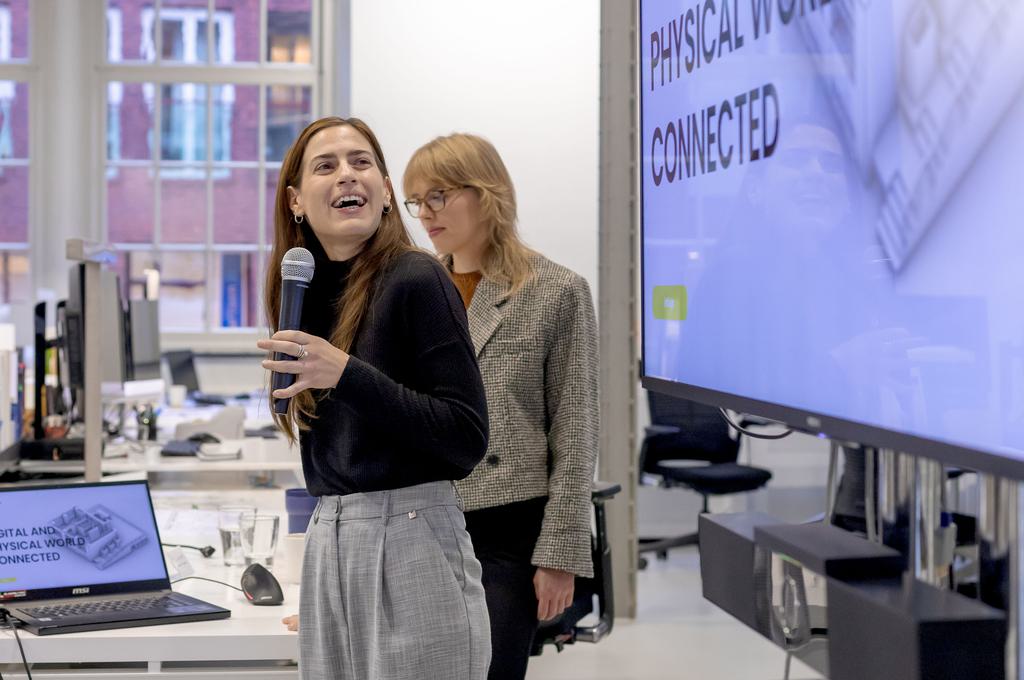At MOR Studio, the architecture firm that Margot Holländer and Anna Tsagkalou founded with five partners, everything revolves around Net Positivity. Margot and Anna closed cepezed’s Green Week today with a call for collaboration, based on the idea that sharing ‘performance data’ can encourage climate-adaptive building.
purpose
Like the other four speakers who spoke at cepezed this week, Margot Holländer and Anna Tsagkalou concluded that sustainability is quite a catch-all term. Their own definition, "Net Positivity," differs from the definitions the other four lecturers articulated, because it includes a purpose: construction should leave something positive behind, instead of consume something. In order to arrive at Net Positivity, MOR Studio measures designs against materials, air, energy, biomass and water.
holistic
With the concept of Net Positivity, MOR Studio approaches sustainability holistically: it is about optimizing all five aspects. MOR Studio originates from a team of TU Delft students, including Anna and Margot, who came up with Net Positivity in 2019 and even developed a prototype. This prototype involved the transition of an existing building and proved that Net Positivity was a workable premise. Margot adds that the reuse of existing buildings is obvious in the Netherlands given the large number of vacant buildings and the huge shortage of housing.
reused data center
MOR Studio's first major assignment is also a transition task: the reuse of a data center in Utrecht for student housing. Client SSH had ‘pretty high sustainability goals’, which was a challenge given the closed and massive concrete structure. But the large storey height offered opportunities for split levels, and the existing façade panels of perforated steel proved very suitable for climbing plants. They were combined with PV panels, windows and balconies. And although surveying the data center ‘did take some time’, as Margot puts it, the students' prototype was eventually translated successfully.
text continues below the photos
MOR studio: architecture should leave something positive rather than use something up



off grid
For a client in Groningen, MOR Studio designed a tiny house. Or at least the 'rough outlines' of it, because it was subsequently built entirely with recycled materials by the residents themselves, as it was meant to be a DIY project. And for a vineyard in Capelle, MOR Studio is currently working on a Net Positive outbuilding with a moveable, prefabricated structure, since it is a temporary function. The outbuilding will offer shelter to the vineyard's volunteers and store tools. It will be off grid in terms of water and electricity. MOR Studio is still researching the best material for the facade. That research includes simply calling up a German architectural firm that is experimenting with cork – ‘a promising facade material’.
digital twin app
MOR Studio not only strives for Net Positivity, but also wants to test how design choices work out after completing the construction. In order to answer the question of what happens after a building is completed, or in other words, 'how it performs', the studio developed the Digital Twin App together with several partners. This app provides insight into the 'performance' of a particular choice, such as the application of a particular insulation material or the extent to which recycled materials have been used. The development of the app is part of a research project subsidized by Innovation Quarter.
insight
Net Positivity is the guiding principle for the Digital Twin App: buildings are monitored on all five components. The idea is that the architects can draw lessons from this, to be able to create even more sustainable new designs - including architects outside of MOR Studio. The app also appears to be of interest to clients and producers of building materials, given the questions Anna and Margot receive about it. With the app, housing corporations, for example, can give residents insight into their sustainable (or unsustainable) acts and habits.
tool
Anna emphasizes that the app is a tool, ‘we are architects, not software developers’. The most important thing is that we learn as much as we can from each other to improve sustainability performance in the future. It encourages Anna that even though monitoring requires an extra investment, clients seem to be quite interested.
Anna Tsagkalou is an architect and, like Margot Holländer, a sustainability engineer. Both are co-founders of MOR studio.

more about the cepezed Green Week:
• Green Week at cepezed
• Andy van den Dobbelsteen: think ‘beyond the building’
• Menno Rubbens: towards an intrinsically circular building sector
• Joost Jacobi: the ins and outs of ‘water circular design’
• Chantal van Schaik: the carbon budget is not taken seriously
→ Mail bd@cepezed.nl or call our business development team on +31 (0)15 2150000